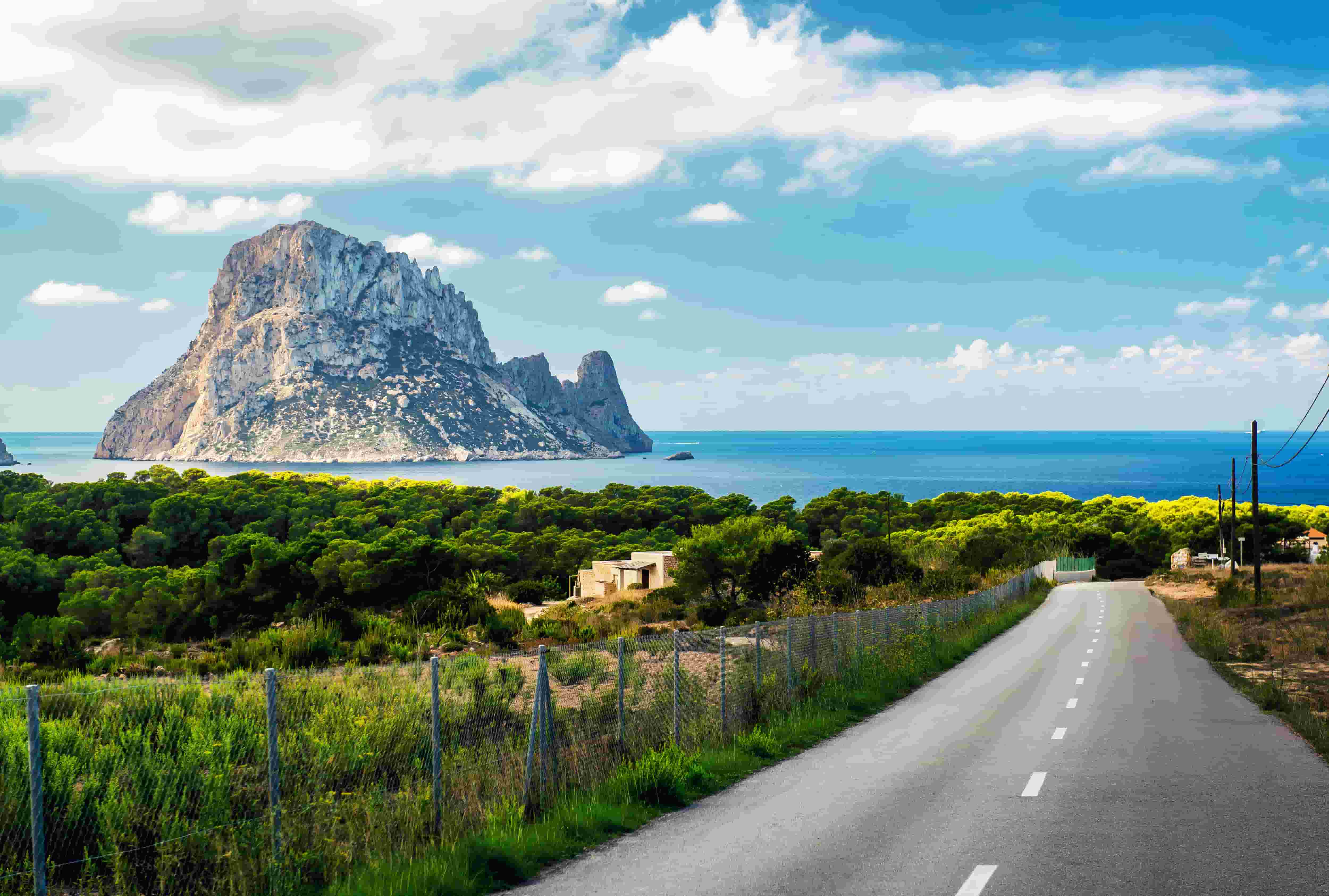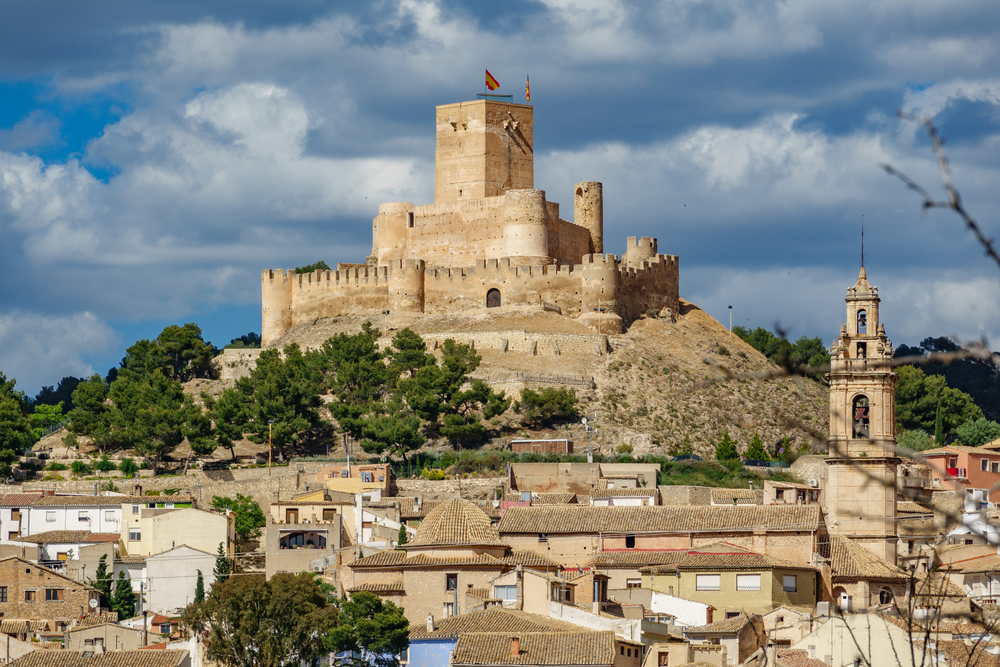
Roadtrip around the castles of the Vinalopó

Wiber Rent A Car
Besides having some 244 kilometres of stunning coastline, Alicante is notably the second most mountainous community in Spain and one of the ones with the greatest concentration of castles and fortresses. On this new route by car, we are going to discover a cultural and historic itinerary that is unique in the country and that goes by the castles that watch over the valley of the Vinalopó, in interior of the Alicante province.
All in all, we are going to drive together along a 75 kilometre route to visit nine castles that used to protect nine cities during the Middle Ages. These were settlements that were on the border between the realms of the Crown of Aragon and the Crown of Castile, so they had to be vantage points from where to watch for and avoid possible attacks and protect their citizens in battles.
These castles and fortresses are a heritage of the passage of the Arabs through the Iberian Peninsula, that left, along with the Christians afterwards, constructions of incalculable architectural value. Transport yourself to the past with Wiber, back to the time of castles, knights, princesses and battles, with this scenic car route around the castles of the Vinalopó. Do you want to come with us and discover history?
Castles of the Vinalopó: a different car route
In order to drive along this emblematic route, we start our engines at the airport of Alicante, from where we will go straight with our Wiber car towards the start of the itinerary: Banyeres de Mariola, where our first castle awaits us.
1. Banyeres de Mariola
Our first stop is in Banyeres de Mariola, the town at the highest altitude in the province of Alicante, where the first fortress overlooking the waters of the Vinalopó river awaits us. This castle is 830 meters above sea level and is an Almohad fortress (12th-13th Century). It is currently the seat of the the Asociación Española de los Amigos de los Castillos (the Spanish Association of Friends of Castles) and it also hosts the Museo Festero (Feast museum), where one can learn about the history of the famous local feast of the Moors and the Christians from Alicante.
This castle has witnessed several wars, the most prominent of which was the War of Succession which took place in 1705, and was used as shelter by the population that was fleeing from sieges and fires in the village. The loyalty that the region’s inhabitants showed Felipe V was rewarded and the settlement was granted the title of noble, faithful, loyal and royal village which can today still be seen in the village’s crest.
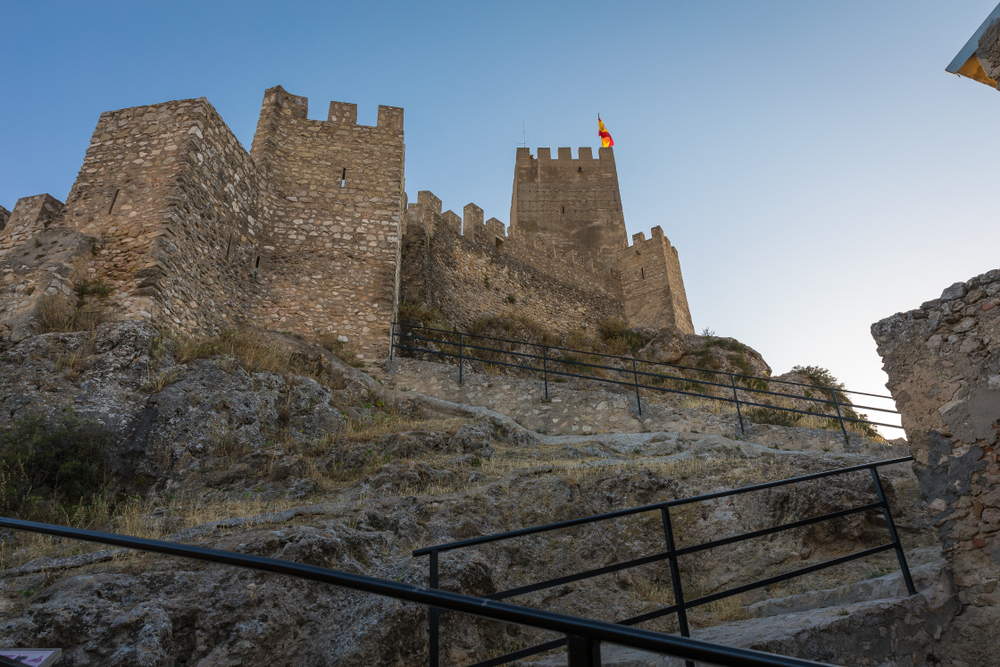
2. Biar
We continue driving in the car until Biar, a village presided over by its castle, a building that dates back to the 12th Century and that was declared a National Monument in 1931. Without a doubt, what stands out the most is the Torre del Homenaje (Homage tower), which is on one of the sides of the castle, and that is 17 meters high and made up of three stories. It was particularly important during the time of Jaime I because, following the Treaty of Almizra (1244), it became one of the border castles.
This fortress also stands out because it was constructed using an Almohad rib vault which, along with those in the neighbouring castle of Atalaya in Villena (which we will visit later) are the among oldest in all of Spain and the only ones used in a military monument.
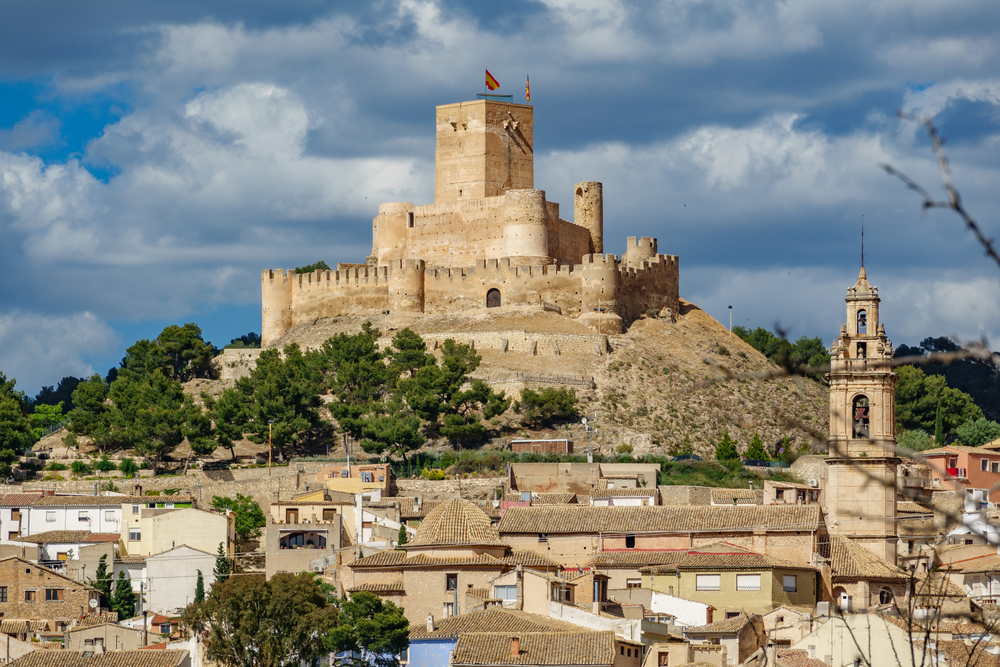
3. Villena
Known as the Castle of the Atalaya (vantage point), the castle in the locality of Villena is the largest of all in this scenic car route and one of the most emblematic and significant. It dates from between the 11th and the 12th Centuries and has a total of twelve turrets that are distributed along the exterior wall of the fortress. It was declared a Historic Artistic Monument in 1931.
As we already mentioned, it also stands out because it has two Almohad rib vaults of great historic importance that are unique in Spain. It also used to watch the old border line between Castile and the Kingdom of Aragon and was a key construction in important military clashes during the Middle Ages.
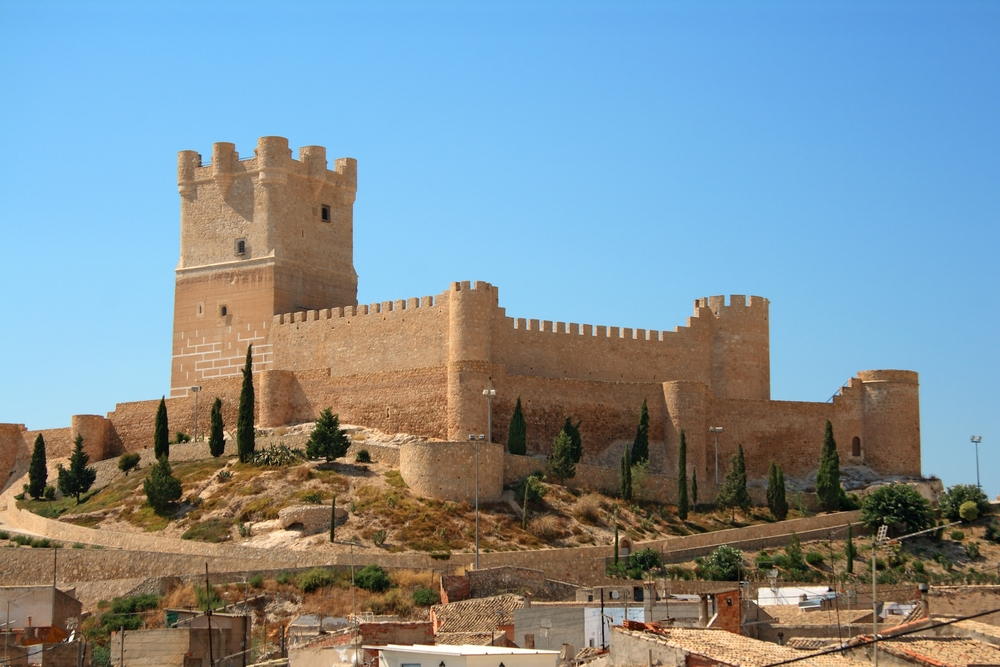
4. Sax
Dominating the municipality of Sax, the castle rises some 524 meters above sea level, sitting on a steep rock. It was built around the 14th Century on top of another Almohad castle from the 12th Century. Like the rest of the castles that we have visited on this route along the Vinalopó, it was part of the defensive line of settlements. This castle is municipal property since 1980 and is completely restored.
The fortress is made up of two towers at each end, one of which is rectangular shaped and has walls that are up to two meters thick. This construction can only be visited, with a guide, on Sundays. The tour lasts around 45 minutes and is organized by the local town hall.
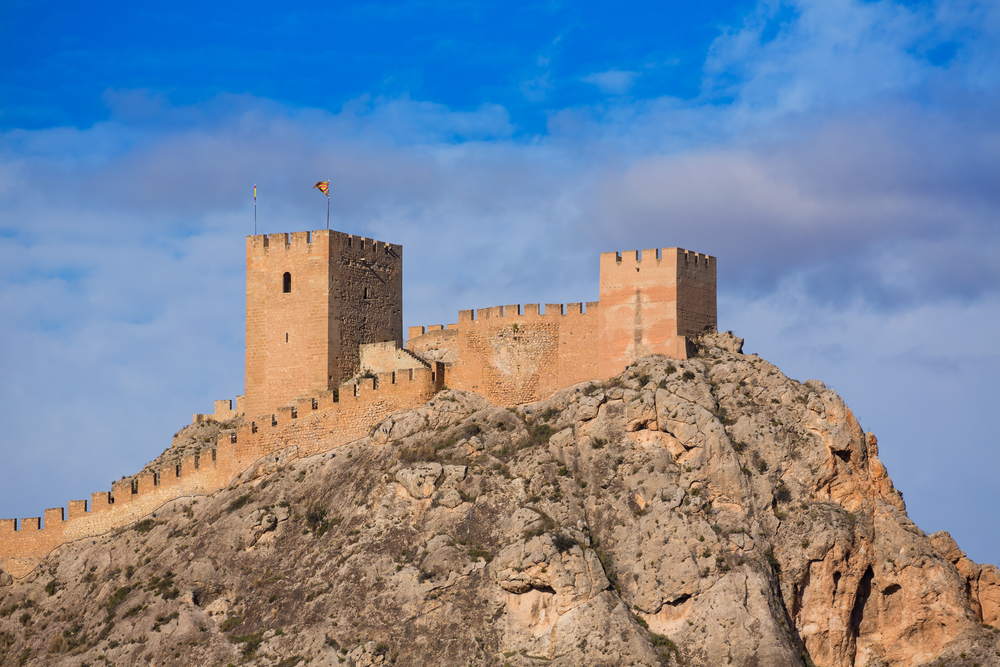
5. Elda – Petrer
We continue driving in the car towards the south and reach the settlements of Elda and Petrer. The Castle of Elda is located on a small hill next to the river and was built between the years 1172 and 1243. It was used to protect the Arab community and served as a military enclosure. It is currently in ruins although it has been partially restored.
The one at Petrer (top picture) is on a mountainous elevation towards the east of the municipality. It is a Muslim castle from the end of the 12th or the beginning of the 13th Century and from it, the whole of the Valley of the Vinalopó can be seen. It has a polygonal shape and was declared to be of Historical and Artistic National Interest in 1983.
Various exhibitions are periodically held in the Torre del Homenaje (homage tower).
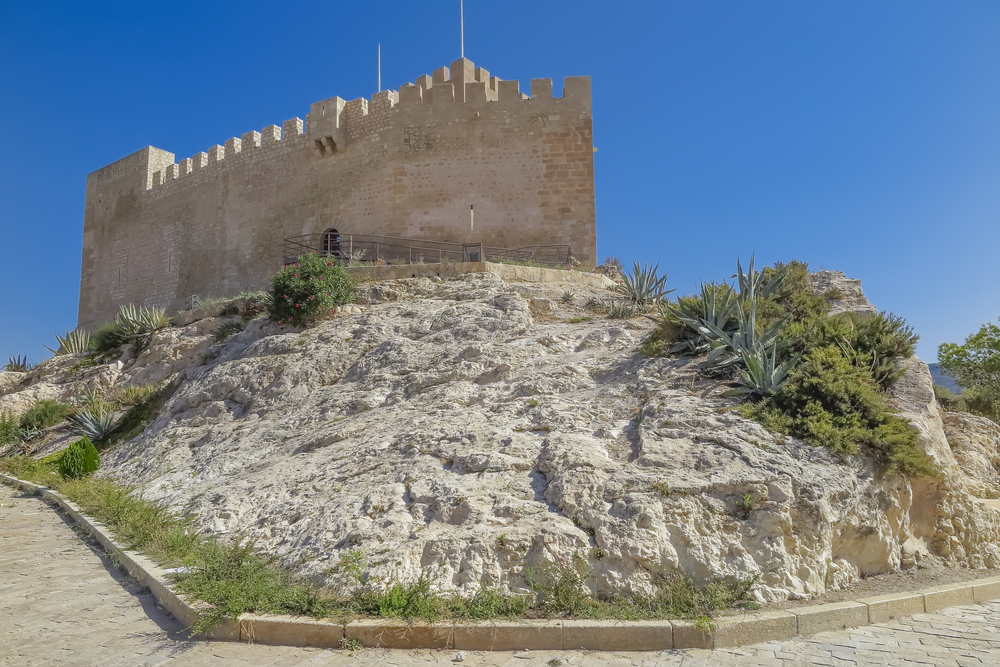
6. Novelda
On the sixth stop of the route, we arrive at Novelda and what is known as La Mola Castle. It was declared a National Monument in the year 1931, dates back to the 12th Century and was built on top of an old Roman fortification. The construction stands out due to a triangular tower, one of the first examples of a civilian-military building in the Valencian style in the Valencian Community. It is known as the Torre de los Tres Picos (Tower of the Three Peaks) and is unique in the whole of Europe.
The fortress is accessed through a rounded arch and is next to the Sanctuary of Santa Maria Magdalena.
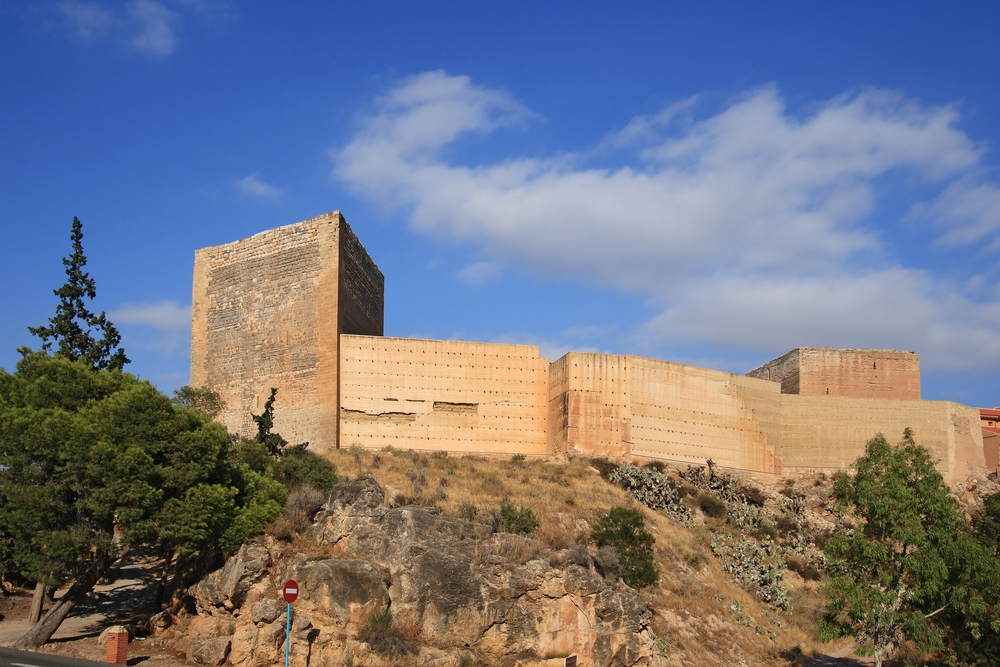
7. Aspe
The castle of the municipality of Aspe is also known as the Castle of the River or Castle of the Moor. Built over an old settlement from Arab times, this castle is, unfortunately, now in ruins and only the remains of some of its twelve turrets can still be enjoyed (even so, it is worth making a short stop).
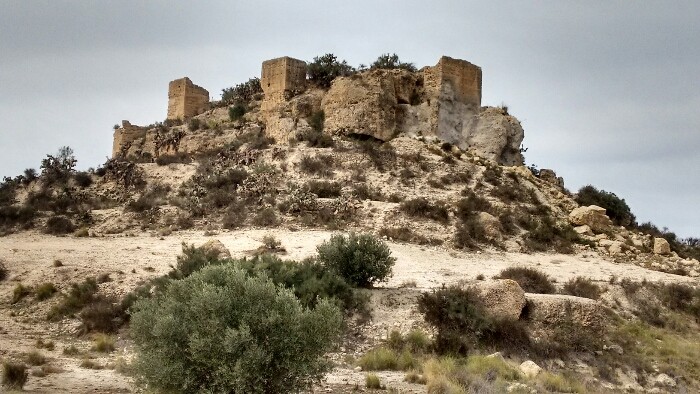
8. Elche
We continue along our route and reach the second most important city in the province of Alicante, Elche. There, we will find the fortress known as the Palace of Altamira or Alcázar de la Señoría, built very close to the Vinalopó river. The construction that can currently be seen and visited was built in the 15th Century but it is believed to have been built on top of an older one from the 12th Century.
This fortress has been restored and is currently in perfect condition. It also hosts the Archeological and History Museum of Elche.
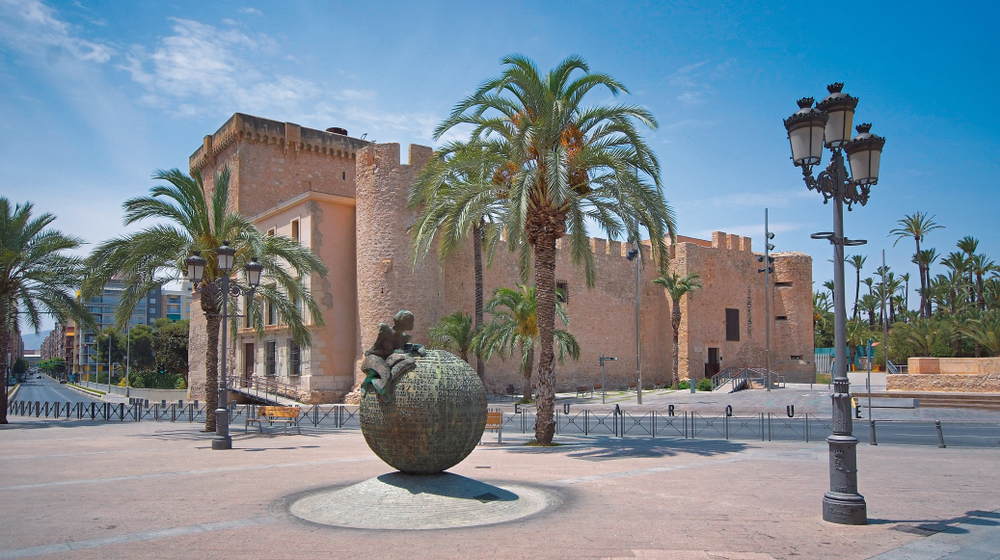
9. Santa Pola
This castle-fortress at Santa Pola is a stunning example of military architecture from the 16th Century. Because it is a coastal town, it used its defensive structure to successfully fend off attacks from Berber pirates. This construction has been used as the City Council, the Civil Guard Station (police), courthouse, hospital and even an improvised bullring.
If you visit Santa Pola now, this castle-fortress hosts the Museo del Mar (Sea Museum), the Municipal Exhibition Hall, the Assembly Hall “Baluarte del Duque de Arcos” (bastion of the Duque of Arcos) and the Chapel of the Virgin of Loreto.
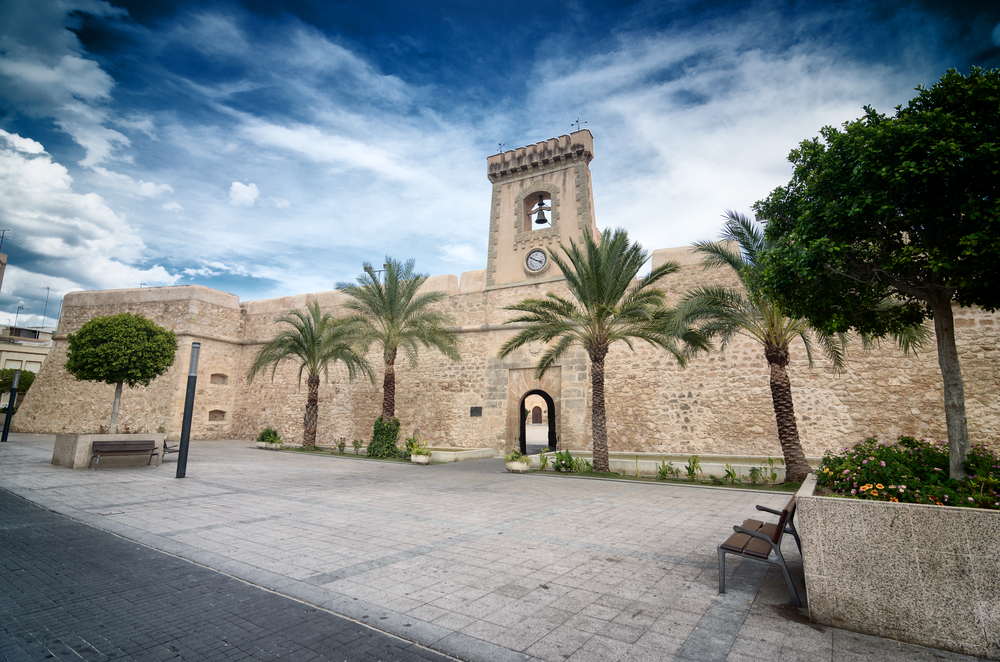
And here, in Santa Pola, is where we put an end to our scenic car route around the castles of the Vinalopó. Which castle caught your attention the most? If you liked the route, we recommend you read the road trip through the Marina Baixa in Alicante. Castles, beach, mountains… what else can you ask for?

 EN
EN  Español
Español  German
German 